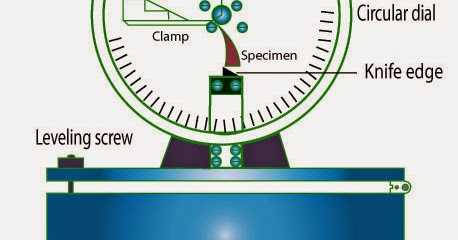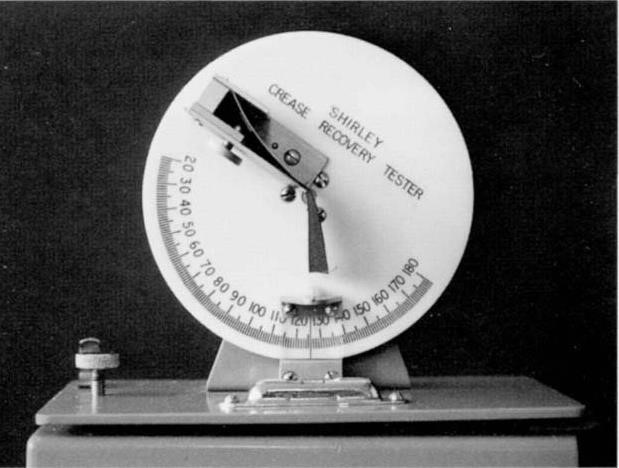Crease Recovery Tester Characteristic

Application:
Crease Recovery Tester & Loading Device, to determine the recovery properties of fabrics by creasing in a loading device for a pre-determined time using a weight suitable for the test method specified (BS/ISO/AATCC). After transferring the specimen to the clamp of the tester, the specimen is allowed to recover and the angle of recovery recorded.
Comes completely with a crease recovery tester and two loading device, and other required accessories.
Standards:
ISO 2313,AATCC 66,BS EN 22313,M&S P22
Fabric Crease Recovery Definition:
During wearing and storage, the fabric will occur locally bend and deformation which become creased because of the external force. Even remove the outside force, the fabric is also difficult to recover to its’ original flat state, which phenomenon called crease.
The importance of crease recovery:
The ability of the fabric to withstand the bend and deformation caused by rubbing is defined as crease resistance. Sometimes, crease resistance is also called the ability of the fabric to gradually recover to its original state due to the fast elasticity and slow elasticity of the fabric after removing the external force that causes the fabric to crease.
A garment made of fabric with a large crease, it is easy to crease when wearing the garment, which is not only seriously affects the appearance of the garment, but also prone to severe wear along the crease that will speed up the damage of the garment. One of the characteristics of wool fabric is that it has better crease recovery, so the crease recovery is an important index to evaluate the wool-sense of the fabric.
Difference between crease resistance and crease recovery:
In fact, there is no difference between crease resistance and crease recovery, but it is a different name in the narrow and broad sense. Studies have shown that the physical properties of the fabric itself and the finishing of the fabric are the main factors affecting the crease recovery of the fabric. There are two main methods to evaluate the crease recovery of fabrics: First, the appearance method, the advantage is that the fabric crease evaluation results are closer to the appearance when used, but the deviation is larger; the second is the crease recovery angle method, that is, using our company’s crease recovery tester, the measurement results are more accurate. Due to the adverse effects of fabric creases, it has become a trend to further improve and improve the crease resistance of fabrics. The use of new raw materials, through the weaving and organizational changes to improve the performance of fabrics, the formation of new functional fabrics and industrial production; while screening the types of finishing agents, optimize the finishing process, process conditions, etc. have been continuously explored and researched.

2018-06-01 09:44


